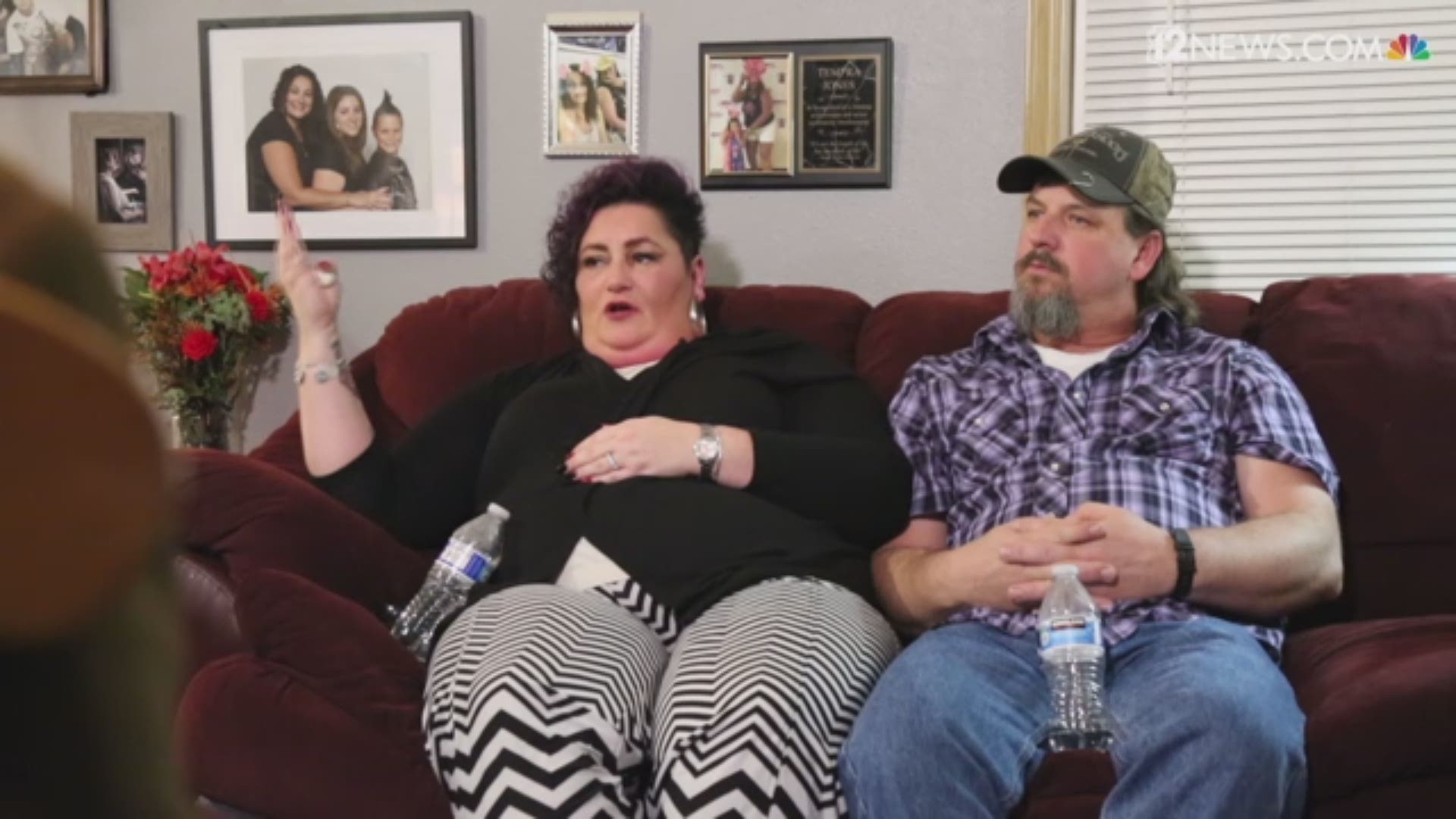PHOENIX — It's not yet peak scorpion season, but already Arizonans are getting stung by the little critters. A wet January and a hot February mean the scorpions are out earlier than usual this year.
Of the 55 types of scorpions in Arizona, there's only one that's likely to cause severe medical problems. The problem child is the bark scorpion. It's one of the smallest varieties, but it packs the biggest punch.
The bad news? The bark scorpion is also the most common type and is frequently found in people’s homes. According to the National Park Service, the bark scorpion is also the most venomous in all of North America. The Poison and Drug Information Center at Banner-University Medical Center Phoenix has already dealt with 588 calls regarding scorpion stings. That's a 46% increase from last year's numbers.
By the time peak season rolls around in August, hospital officials say, they'll be dealing with thousands of calls every month. For reference, the bark scorpion is light brown in color (allowing it to blend in well with the desert), reaches 2 to 3 inches in length at maturity and has long and slender tail segments and pincers. It also glows green under UV light.
There are many ways to minimize your family's risk of getting stung, so consider taking these precautions:
1. Do not leave a baby’s crib unprotected.
The bark scorpion is the best climber of its species and can climb on anything but clean plastic and glass, because those surfaces are too smooth. It can be found on ceilings, cement walls and shower curtains, and in clothing closets and food storage areas.
To prevent a scorpion from climbing or falling into a baby’s crib, move the crib away from the wall, take off any crib skirts that touch the floor, and place the legs of the crib in glass jars. Also consider getting a crib netting or building a scorpion shield not just over a baby’s crib, but over all the beds in the house. A scorpion shield is a rectangular piece of foam that hangs over a crib or a bed, which is meant to catch any scorpions that fall from the ceiling.
2. Do not get into bed without looking.
Banner Poison and Drug Information Center conducted a study that found that 33% of scorpion sting victims were stung in the bedroom, 24% in the living room and 6% in the bathroom.
So before climbing into bed for the night, be sure to roll back the bed linens and check for any critters that might have climbed in.
The easiest way to spot a scorpion in a house is to use a black light after dark. They’ll have a color similar to a green glow stick.
3. Do not put on shoes or clothing without checking.
The study also showed that 60% of people were stung on the hand or the foot. The bark scorpion is small, usually only 1 to 1.5 inches in length, so it can hide in lots of tight spaces. Shake or examine all clothing and shoes before putting them on.
4. Do not go outside barefoot.
This is critical — especially if you live in an area prone to scorpions. Take that extra minute and throw on a pair of close-toed shoes. Scorpions are most active at night and like places that are dark and damp, so be especially careful around swimming pools.
Maureen Roland, a clinical educator and outreach coordinator at Banner Poison and Drug Information Center, said one eco-friendly way to combat scorpions is spreading diatomaceous earth in your backyard. This powder can be purchased at places like Walmart and Home Depot and is made of finely crushed fossilized algae. It is deadly to little critters who crawl in it but non-toxic to your family.
5. Make your home uninviting.
Scorpions are looking for three things: food, water and shelter. Pest control is important because scorpions will be attracted to bugs like crickets, ants and cockroaches. Be sure to fix leaky faucets, water pipes or roofs. Leave pet dishes empty at night and don't leave damp towels lying around. Pick up clutter like papers or magazines, as these are great hiding places for little scorpions.
What to do if you’re stung:
Fortunately the majority of stings can be managed at home with basic first aid measures:
• DO clean the site with soap and water.
• DO use a cool compress.
• DO position the affected limb to a comfortable position.
• DO use over the counter medication as needed for minor discomfort.
• Do call the poison center at 1-800-222-1222 to have a poison expert help you determine if you need to go to the hospital.
Symptoms in children
Children younger than 10 are more likely to develop severe symptoms from a scorpion sting. You may notice uncontrollable crying, rapid or jittery eye movements and increased salivation. Kids may also constantly rub their nose and face to indicate facial numbness and tingling.
Adult reactions
For adults symptoms include immediate local pain or a burning sensation with no swelling or redness. Touching the site can cause great pain, numbness and tingling moving to parts of the body distant from the sting. Visual disturbances and/or uncoordinated eye movements. Difficulty swallowing, excessive drooling, slurred speech. Muscle twitching, restlessness, irritability, respiratory problems and possible respiratory arrest.


